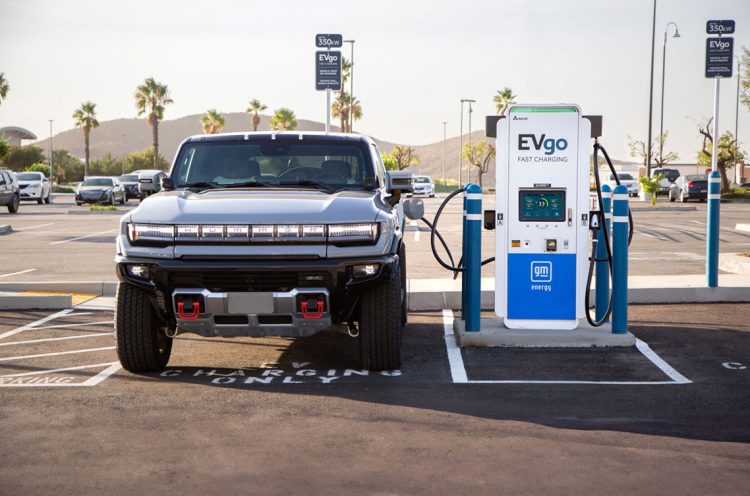Introduction: The Quest for Zero Emissions in the Automotive Industry
Electric vehicles (EVs) are often touted as the future of transportation, with the promise of reducing greenhouse gas emissions, improving air quality, and offering a sustainable alternative to traditional gasoline-powered cars. However, while EVs significantly outperform internal combustion engine (ICE) vehicles in terms of carbon emissions during their operation, the question remains: Can they truly achieve zero emissions across their entire lifecycle—from production to end-of-life disposal?
The full environmental impact of an EV involves several stages, including manufacturing, operation, and disposal. Each phase has its own set of challenges, particularly when it comes to the materials used in the production of EVs, the energy sources used for charging, and the disposal and recycling of batteries and other components. This article will explore the full lifecycle of electric vehicles, examine the efforts being made to minimize their environmental impact, and evaluate whether EVs can truly be considered “zero-emissions” vehicles.
The Lifecycle of Electric Vehicles: A Breakdown
The lifecycle of an electric vehicle can be broken down into several key stages, each of which contributes to the overall environmental footprint of the vehicle. Understanding the impact of each phase is critical to assessing the potential for EVs to achieve zero emissions.
- Manufacturing and Materials Extraction
The first stage in the lifecycle of an EV is manufacturing, which includes the extraction of raw materials, the production of the vehicle’s components, and the assembly of the vehicle itself. This stage is one of the most energy-intensive parts of an EV’s lifecycle and involves several processes that contribute to emissions.
Raw Material Extraction
Electric vehicles rely heavily on a range of raw materials, including lithium, cobalt, nickel, and graphite, which are used in the batteries that power these vehicles. Mining and extracting these materials have a significant environmental impact. Mining operations, particularly in countries with less stringent environmental regulations, can lead to habitat destruction, water contamination, and carbon emissions.
Lithium, the key component of many EV batteries, is extracted from salt flats or mined from the earth. Cobalt, another important material, is often sourced from regions with poor labor practices and environmental controls, further exacerbating concerns about the environmental and social impact of EV production.
Manufacturing and Battery Production
The manufacturing of EV batteries is a particularly energy-intensive process. According to studies, the production of a lithium-ion battery used in an electric vehicle can result in significant carbon emissions, particularly when the electricity used in production comes from fossil fuels. The emissions from battery production can vary depending on the energy mix of the region in which the battery is manufactured, with regions relying on coal and natural gas for electricity contributing higher levels of emissions than those using renewable energy.
In addition to the carbon emissions from energy consumption, the manufacturing process also involves the use of chemicals and materials that can have environmental impacts. Efforts are being made to reduce the environmental footprint of battery production by improving energy efficiency in factories and increasing the recycling of materials used in battery manufacturing.
- Operation and Energy Use
Once an electric vehicle is produced, it is put into operation, which involves charging the battery and driving the vehicle. The operational phase of an EV is where it has the greatest potential to reduce emissions when compared to traditional gasoline-powered vehicles.
Emissions from Charging the Vehicle
The emissions associated with operating an electric vehicle depend largely on the energy sources used to charge the vehicle’s battery. In regions where electricity is generated primarily from renewable sources such as wind, solar, or hydroelectric power, the carbon footprint of charging an EV can be very low, approaching zero emissions. In contrast, regions that rely on coal, natural gas, or other fossil fuels for electricity generation will result in higher emissions from charging EVs.
The good news is that the global energy mix is gradually shifting toward renewable energy sources, which means that the emissions associated with charging EVs are likely to decrease over time. The adoption of more sustainable energy generation methods can significantly improve the environmental profile of EVs during the operational phase.
Efficiency and Fuel Economy
Electric vehicles are also much more efficient than their gasoline counterparts. Internal combustion engines typically operate at only about 20-30% efficiency, with much of the energy lost as heat. In contrast, electric drivetrains can achieve efficiencies of 85% or higher, meaning that more of the energy stored in the battery is used for actual driving.
This higher efficiency translates to fewer emissions per mile driven, especially when coupled with cleaner energy sources for charging. EVs do not produce tailpipe emissions, which is one of their most significant advantages over conventional vehicles in terms of air quality and public health.
- End-of-Life Disposal and Recycling
At the end of an electric vehicle’s useful life, the vehicle is retired, and its components must be disposed of or recycled. The disposal phase is an important consideration when evaluating the overall environmental impact of EVs.

Battery Recycling and Disposal
One of the most significant challenges in the end-of-life phase of electric vehicles is the disposal of their batteries. Lithium-ion batteries, which are commonly used in EVs, are not biodegradable, and improper disposal can lead to environmental contamination. As the adoption of EVs increases, the number of batteries reaching the end of their lifecycle will also grow, creating a potential environmental issue.
To address this, the EV industry is working to improve battery recycling technologies. Battery recycling helps recover valuable materials like lithium, cobalt, and nickel, reducing the need for new mining operations. Several companies and research organizations are developing closed-loop recycling systems that can more effectively process used batteries and extract these materials for reuse. Additionally, some automakers are investing in infrastructure to recycle EV batteries at the end of their useful lives, further reducing the environmental impact.
Vehicle Recycling
Beyond batteries, the rest of the EV must also be disposed of or recycled at the end of its life. EVs contain a range of materials, including metals, plastics, and glass, many of which can be recycled or reused. The recycling of these materials is crucial to reducing the environmental footprint of vehicle production and minimizing waste. While recycling technologies for EVs are still evolving, progress is being made in improving the efficiency of vehicle recycling processes.
- Sustainability Efforts in the EV Industry
The automotive industry is taking significant steps to reduce the environmental impact of EVs throughout their lifecycle. These efforts include the development of more sustainable manufacturing processes, the use of renewable energy in production, and advancements in battery recycling technologies.
Green Manufacturing Practices
Automakers are increasingly focusing on reducing the environmental impact of their manufacturing processes. This includes efforts to use more sustainable materials, reduce energy consumption in factories, and lower emissions associated with vehicle production. For example, some automakers are exploring the use of recycled materials in vehicle production and seeking to reduce their reliance on rare and environmentally harmful materials.
Circular Economy Models
The concept of a circular economy, where products and materials are reused, recycled, and repurposed to minimize waste, is gaining traction in the EV industry. By implementing circular economy principles, automakers can reduce the environmental impact of EV production and disposal, making it easier to recycle parts and materials and extend the useful life of components.
Some companies are also investing in the second-life use of EV batteries. Batteries that are no longer suitable for use in vehicles may still have significant capacity left for stationary energy storage applications, helping to reduce the need for new batteries and supporting the transition to renewable energy.
- Achieving Zero Emissions Across the Lifecycle: Is It Possible?
Achieving zero emissions across the entire lifecycle of an electric vehicle is a complex challenge, but it is becoming increasingly feasible. While the manufacturing process, particularly the production of batteries, remains a significant source of emissions, efforts are underway to reduce the carbon footprint of these stages through greener energy use, sustainable materials, and improved recycling technologies.
During the operational phase, electric vehicles offer the potential for significant emissions reductions, especially when paired with renewable energy sources for charging. As the energy grid becomes cleaner and more renewable sources are incorporated, the carbon emissions associated with operating EVs will continue to decrease.
At the end of their lifecycle, the recycling and repurposing of EV batteries, as well as the recycling of vehicle components, will play a key role in reducing waste and minimizing the environmental impact of EVs.
While achieving truly zero emissions across the entire lifecycle may not be immediately attainable, ongoing advancements in technology, policy, and industry practices are steadily moving the automotive sector closer to this goal. With continued innovation and investment in sustainability efforts, electric vehicles can play a crucial role in reducing global emissions and combating climate change.
Conclusion: A Path Toward Zero Emissions
Electric vehicles have made significant strides in reducing emissions, particularly during their operational phase. While the manufacturing and disposal phases still present challenges, ongoing efforts to improve battery technology, increase recycling rates, and adopt sustainable manufacturing practices are helping to minimize the overall environmental impact of EVs.
The shift toward electric vehicles represents a critical step in the transition to a more sustainable and low-carbon future. While achieving zero emissions across the entire lifecycle of an EV may not be entirely realistic in the short term, the industry is moving closer to this goal, and EVs remain one of the most promising solutions for reducing transportation-related emissions and mitigating climate change.











































